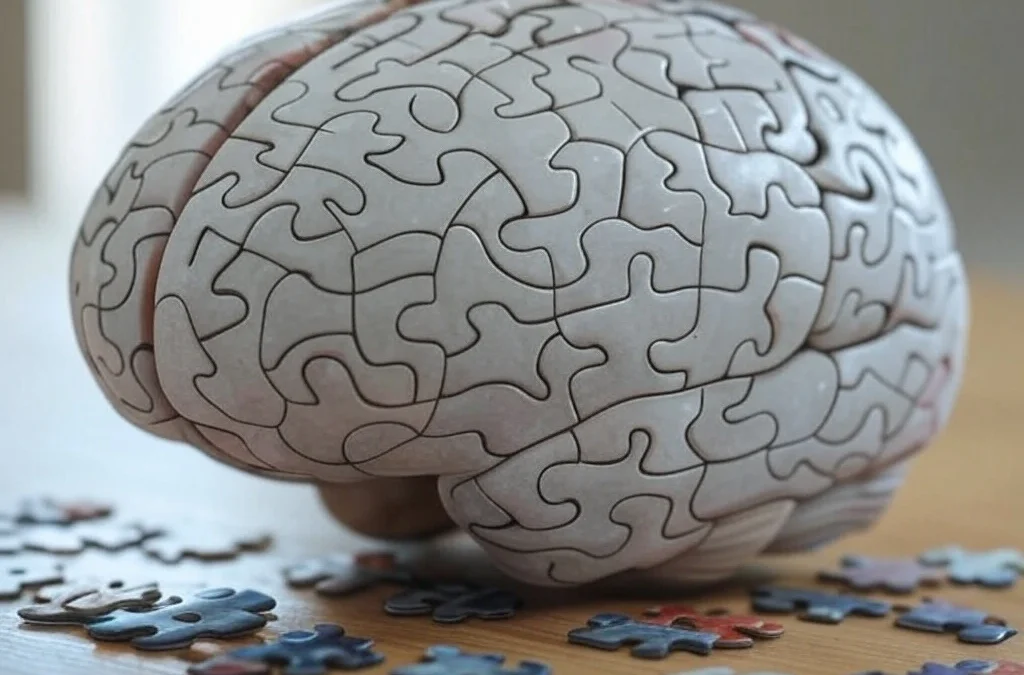Respect is one of the foundation stones of healthy relationships and functioning societies. It involves showing consideration for others’ feelings, rights, traditions, and personal boundaries. When we respect someone, we acknowledge their worth and value as a person. Respect can be shown in countless ways, from small daily interactions to significant life choices. This article explores what respect truly means and provides concrete examples to help you recognize and practice respect in your own life.
What is Respect?
Respect is recognizing and honoring the worth, rights, and dignity of others. It means treating people with courtesy and consideration regardless of differences in opinion, background, or status. True respect goes beyond simple politeness—it requires genuine regard for others and a willingness to consider their perspectives and needs.
Respect can be directed toward:
- Other people (interpersonal respect)
- Ourselves (self-respect)
- Communities and institutions
- Nature and the environment
- Rules and boundaries
- Traditions and cultures
Having respect means valuing others’ experiences and viewpoints even when they differ from our own. It’s about creating space for others to exist as they are without judgment or attempts to control them.
30 Examples of Respect
1. Active Listening
When someone is speaking, giving them your full attention shows respect. This means putting away your phone, maintaining appropriate eye contact, and genuinely focusing on what they’re saying rather than planning your response.
2. Using Appropriate Language
Adjusting your language based on the setting and people present shows awareness and respect. This might mean avoiding profanity in professional settings or speaking more formally when the situation calls for it.
3. Being Punctual
Arriving on time for meetings and appointments demonstrates that you value others’ time as much as your own. When you’re punctual, you show that you respect the commitment you made.
4. Asking Permission
Before borrowing someone’s belongings or entering their personal space, asking permission acknowledges their ownership and boundaries. This simple act shows you recognize their right to control their possessions and space.
5. Keeping Promises
When you make a commitment and follow through, you show respect for your word and for the person to whom you made the promise. Reliability builds trust and demonstrates respect.
6. Accepting Differences
Respecting others includes accepting differences in opinion, background, culture, and lifestyle choices. This doesn’t mean you must agree with everyone, but it does mean acknowledging others’ right to be different.
7. Giving Credit
Acknowledging others’ contributions and ideas rather than taking credit for them shows respect for their work and intellectual property. This is especially important in academic and professional settings.
8. Speaking Kindly About Others
Avoiding gossip and speaking respectfully about people when they aren’t present demonstrates integrity and respect. This includes not sharing private information that was shared in confidence.
9. Waiting Your Turn
Whether standing in line at a store or waiting to speak in a conversation, taking your turn rather than interrupting or cutting in line shows respect for established order and others’ rights.
10. Offering Help
Being attentive to others’ needs and offering assistance when appropriate—like holding a door open or helping someone carry a heavy load—shows consideration and respect.
11. Respecting Physical Boundaries
Being mindful of personal space and physical boundaries demonstrates respect for others’ comfort and autonomy. This includes asking before hugging someone and backing away if someone seems uncomfortable.
12. Treating Service Workers With Dignity
How we treat people in service positions—like servers, cashiers, or custodians—reveals much about our character. Speaking politely and showing appreciation demonstrates respect regardless of job status.
13. Honoring Cultural Practices
Taking time to learn about and honor different cultural traditions, especially when visiting other countries or attending cultural events, shows respect for diversity and heritage.
14. Maintaining Confidentiality
Keeping sensitive information private when someone shares it with you demonstrates trustworthiness and respect for their privacy and vulnerability.
15. Following Rules and Laws
Adhering to established rules, whether in someone’s home, at work, or in society at large, shows respect for order and the well-being of the community.
16. Considering Noise Levels
Being mindful of noise levels in shared spaces – like apartments, libraries, or public transportation – shows consideration for others’ right to peace and quiet.
17. Practicing Good Table Manners
Using appropriate dining etiquette shows respect for those sharing a meal with you and acknowledges the social context of eating together.
18. Not Texting While Talking
Putting your phone away during conversations and meals shows that you value the present interaction and the people you’re with more than digital distractions.
19. Acknowledging Elders
In many cultures, showing special consideration for older people is an important form of respect. This might mean offering them a seat, listening to their advice, or using respectful terms of address.
20. Using Proper Titles
Addressing people by their preferred titles (Dr., Professor, Mr., Ms., etc.) until invited to use their first name shows respect for their professional status or personal preference.
21. Knocking Before Entering
Knocking on a closed door before entering acknowledges someone’s right to privacy and gives them time to prepare for your entrance.
22. Accepting Constructive Criticism
Being open to feedback without becoming defensive shows respect for others’ perspectives and a commitment to personal growth. It demonstrates that you value truth over ego.
23. Respecting Others’ Beliefs
Even when you disagree with someone’s religious or political views, respecting their right to hold those beliefs demonstrates tolerance and respect for intellectual freedom.
24. Being Mindful of Shared Resources
Whether it’s cleaning up after yourself in a break room or conserving water during a shortage, being mindful of resources that others also need shows community respect.
25. Returning Borrowed Items Promptly
When you borrow something, returning it in the same condition and in a timely manner shows respect for others’ property and generosity.
26. Using Respectful Communication in Disagreements
Disagreeing without becoming personal or insulting demonstrates respect for the other person even amid conflict. This includes using “I” statements rather than accusatory language.
27. Making Space in Conversations
Ensuring everyone has a chance to speak, especially those who are quieter or from marginalized groups, shows respect for diverse voices and perspectives.
28. Honoring Time Constraints
Being mindful of meeting end times and not extending conversations when someone has indicated they need to leave shows respect for their schedule and commitments.
29. Supporting Others’ Goals
Offering encouragement and practical support for others’ aspirations demonstrates respect for their dreams and potential, even when their path differs from yours.
30. Acknowledging Mistakes
When you’ve done something wrong, acknowledging it, apologizing sincerely, and taking steps to make amends shows respect for those you’ve affected and for your own integrity.
Synonyms of Respect
Understanding the different ways we express respect can help deepen our appreciation for this important value. While “respect” is the most commonly used term, there are many other words that carry similar meanings, depending on the context. Here are some useful synonyms of respect:
-
Admiration – A feeling of great approval or appreciation for someone’s qualities or achievements.
-
Esteem – High regard or value placed on a person, often due to their character or accomplishments.
-
Honor – A deep sense of recognition for someone’s integrity, bravery, or virtue.
-
Regard – A general term for respect and consideration, often used in formal or thoughtful communication.
-
Reverence – A profound, often spiritual or moral, respect for someone or something.
-
Deference – Polite submission or yielding to someone else’s judgment, wishes, or opinion.
-
Appreciation – A recognition of someone’s worth, effort, or value, often shown through gratitude or praise.
-
Consideration – Thoughtful respect for the feelings, rights, and needs of others.
-
Veneration – Deep respect that is often reserved for elders, traditions, or sacred things.
The Foundation of Self-Respect
Respect for others begins with self-respect. When we value ourselves, we’re better equipped to value others. Self-respect involves:
- Setting healthy boundaries
- Taking care of your physical and mental health
- Speaking to yourself with kindness
- Honoring your own values and beliefs
- Standing up for yourself when necessary
- Taking responsibility for your actions
Without self-respect, we might accept disrespectful treatment from others or fail to recognize when we’re not showing proper respect. Developing self-respect is therefore essential to creating respectful relationships.
The Hidden Benefits of Showing Respect
Respect isn’t just the right thing to do – it actually brings practical benefits to your life. Research shows that people who regularly show respect to others often experience better outcomes in their personal and professional lives.
When you respect others, they’re more likely to respect you back. This creates a positive cycle that can transform your relationships. At work, showing respect to colleagues leads to stronger teamwork and fewer conflicts. Many studies have found that teams with high levels of mutual respect solve problems faster and produce better results.
The health benefits of respectful relationships shouldn’t be overlooked either. Studies have linked positive social connections to lower stress levels, improved immune function, and even longer lifespans. When people feel respected, their body releases less cortisol – the stress hormone that can damage health over time.
In families, respect creates stronger bonds between parents and children. Children who grow up in homes where respect is practiced consistently tend to have higher self-esteem and better social skills. They’re also more likely to stand up against bullying and mistreatment when they see it happening to others.
Respect also plays a crucial role in conflict resolution. When disagreements arise – as they inevitably will – approaching the situation with respect makes finding solutions much easier. Instead of escalating into heated arguments, respectful discussions focus on understanding different perspectives and finding common ground.
The bottom line? Making respect a priority isn’t just about being nice – it’s a practical strategy for building a better life and stronger communities. By practicing the examples outlined in this article, you’re not only doing what’s right – you’re also setting yourself up for more positive, productive relationships in every area of your life.
Teaching Respect to Children
Children learn respect primarily through observation. When they see adults treating each other with consideration and kindness, they absorb these behaviors as normal and expected. Some effective ways to teach respect include:
- Modeling respectful behavior in your own interactions
- Explaining the reasoning behind rules and expectations
- Acknowledging and appreciating respectful behavior when children demonstrate it
- Setting clear boundaries and enforcing them consistently
- Teaching conflict resolution skills
- Reading books that highlight themes of respect and empathy
- Discussing disrespectful behavior in media and real life
Children who grow up in environments where respect is consistently practiced and valued are more likely to become respectful adults.
Respect in Different Cultures
Respect takes different forms across cultures. What’s considered respectful in one culture might be seen as disrespectful in another. Some examples include:
- In Japan, bowing shows respect, with the depth of the bow indicating the level of respect being shown
- In many Middle Eastern countries, it’s respectful to remove shoes before entering someone’s home
- Some cultures consider direct eye contact respectful, while others view it as challenging or disrespectful
- In certain Asian cultures, respect for elders is shown through specific language forms and deference
- Some cultures emphasize individual respect, while others focus more on respect for the group or community
When interacting with people from different cultural backgrounds, taking time to learn about their customs and expectations regarding respect can help avoid unintentional offense and build stronger relationships.
Respect in Professional Settings
In workplaces, respect creates productive, positive environments where people can thrive. Professional respect includes:
- Valuing colleagues’ expertise and contributions
- Meeting deadlines and commitments
- Giving credit where it’s due
- Maintaining appropriate boundaries
- Addressing conflicts directly and constructively
- Being punctual for meetings and appointments
- Following through on responsibilities
- Providing constructive feedback respectfully
Organizations that foster cultures of respect typically experience lower turnover, higher productivity, and better collaboration among team members.
When Respect Is Missing: Recognizing Disrespect
Understanding what respect looks like also means recognizing its absence. Common signs of disrespect include:
- Interrupting or talking over others
- Dismissing others’ ideas or concerns
- Making decisions that affect others without consulting them
- Using sarcasm or mockery
- Ignoring boundaries after they’ve been clearly stated
- Taking credit for others’ work
- Making assumptions rather than asking questions
- Chronic lateness or cancellations
- Speaking harshly or using derogatory language
Recognizing these behaviors—in others and in ourselves—is the first step toward addressing them and building more respectful interactions.
Conclusion
Respect isn’t merely about politeness or following social rules—it’s about recognizing the inherent worth and dignity of every person. When we practice respect consistently, we contribute to creating more harmonious relationships and communities. The examples in this article offer practical ways to demonstrate respect in various contexts, but the underlying principle remains the same: treating others as we would wish to be treated.
By making respect a conscious priority in our daily interactions, we not only improve our relationships but also contribute to a more compassionate and considerate society. Remember that respect, like many virtues, grows stronger with practice and intention.
Read also: 30 Cynicism Examples in Everyday Life & Definition
The Most Popular on BitGlint

30 Nature Worship Examples & Meaning
Nature has always mattered to people. Long before modern religions, people looked to the sky, the land, and the...

Top 30 Synergy Examples in Different Fields & Definition
Synergy represents one of the most powerful concepts across numerous fields - from business and science to...

30 Doubt Examples & Meaning
Everyone experiences doubt. It can show up in small everyday choices or big life decisions. Sometimes it’s a quiet...

40 Emotional Value Examples & Meaning
Why do some messages stick — while others are forgotten? Why do people choose one brand over another, even when the...

100 Temporary Things Examples & Meaning
What does it mean when something is temporary? We use the word often, but many people don’t stop to think about it. In...

100 Things That Are Short
Not everything in life is big or long-lasting. Some things are small. Some things pass quickly. People notice short...

100+ Things That Are Cold
Cold is something most people understand the moment they feel it. You step outside on a freezing morning. You grab a...
Get Inspired with BitGlint
The Latest
30 Examples of Gathering & What It Means
The word gathering shows up in everyday life more than we think. People gather at dinner tables, sports games, places of worship, and even in traffic. We gather items, thoughts, ideas, and people. It’s a word that covers both the ordinary and the meaningful. But what...

100 Non-Digital Things List
In everyday life, there are still hundreds of objects, tools, and materials that exist completely outside the digital world. These things don’t rely on apps, batteries, software, or code. They work the way they always have — by touch, by movement, by presence. Some...
100+ Legends Examples, Types, and Meanings
Legends have fascinated people for centuries. These traditional stories mix real history with imagination. From ancient warriors and lost cities to mysterious creatures, legends are found in every culture around the world. This article will take you through over 100...
30 Amazing Ideas for a Reunion with Friends
Hello, fellow reunion planners and enthusiasts! Are you gearing up for a spectacular gathering with your cherished friends and looking for ideas that will turn your reunion into an unforgettable experience? Well, you're in for a treat! In this curated list, we've put...

